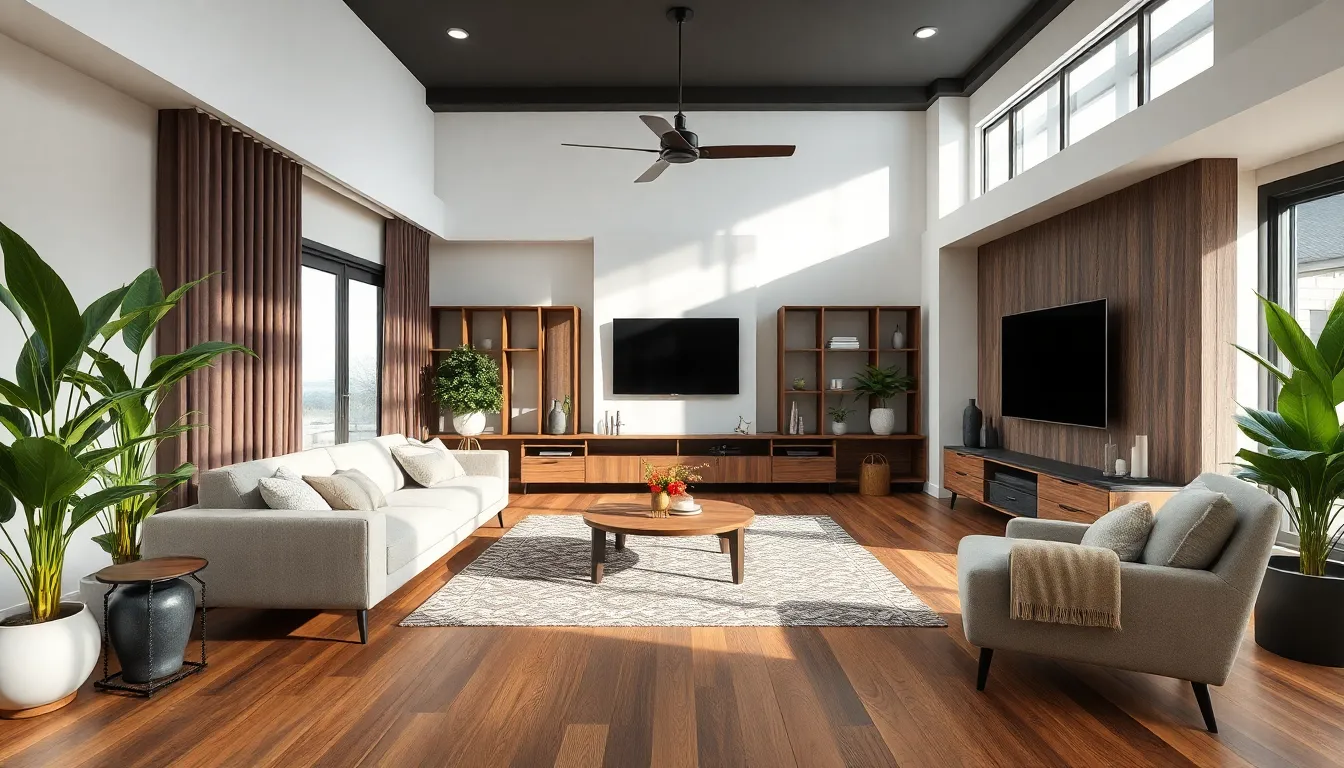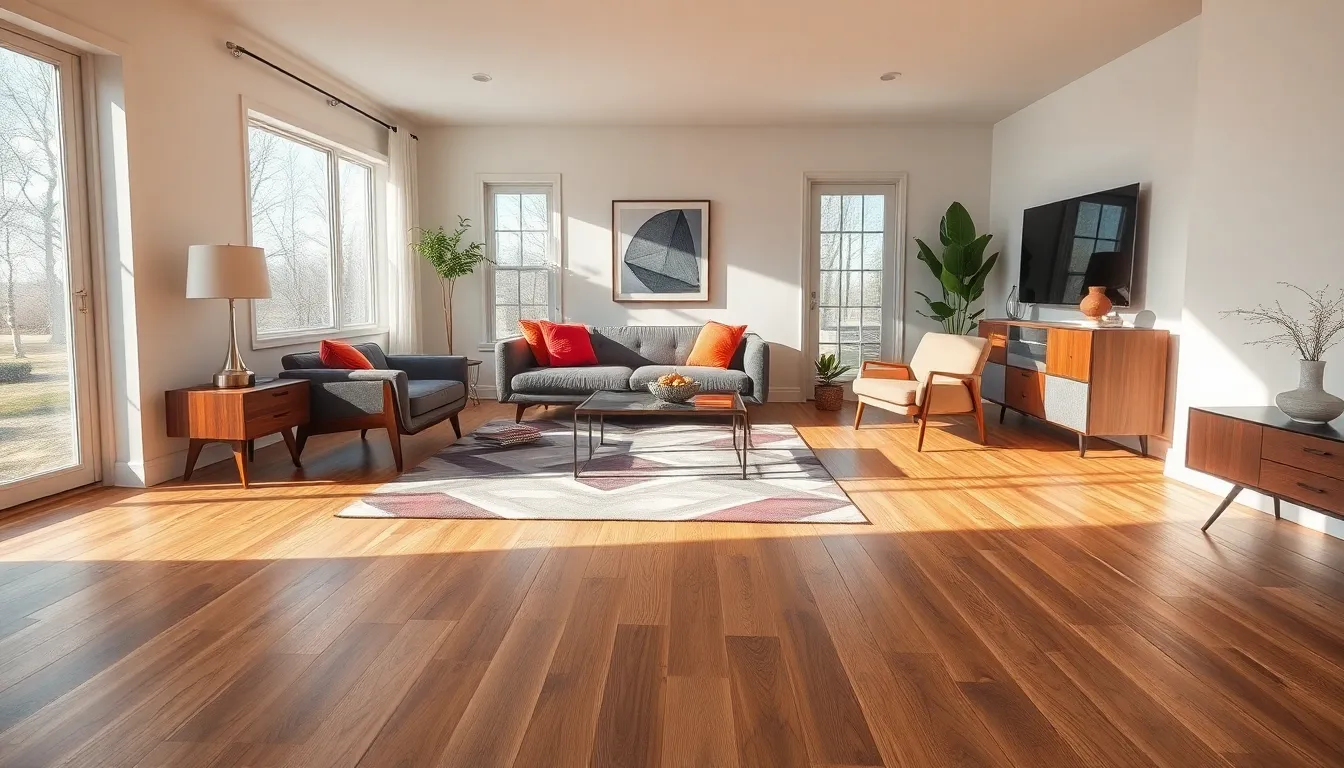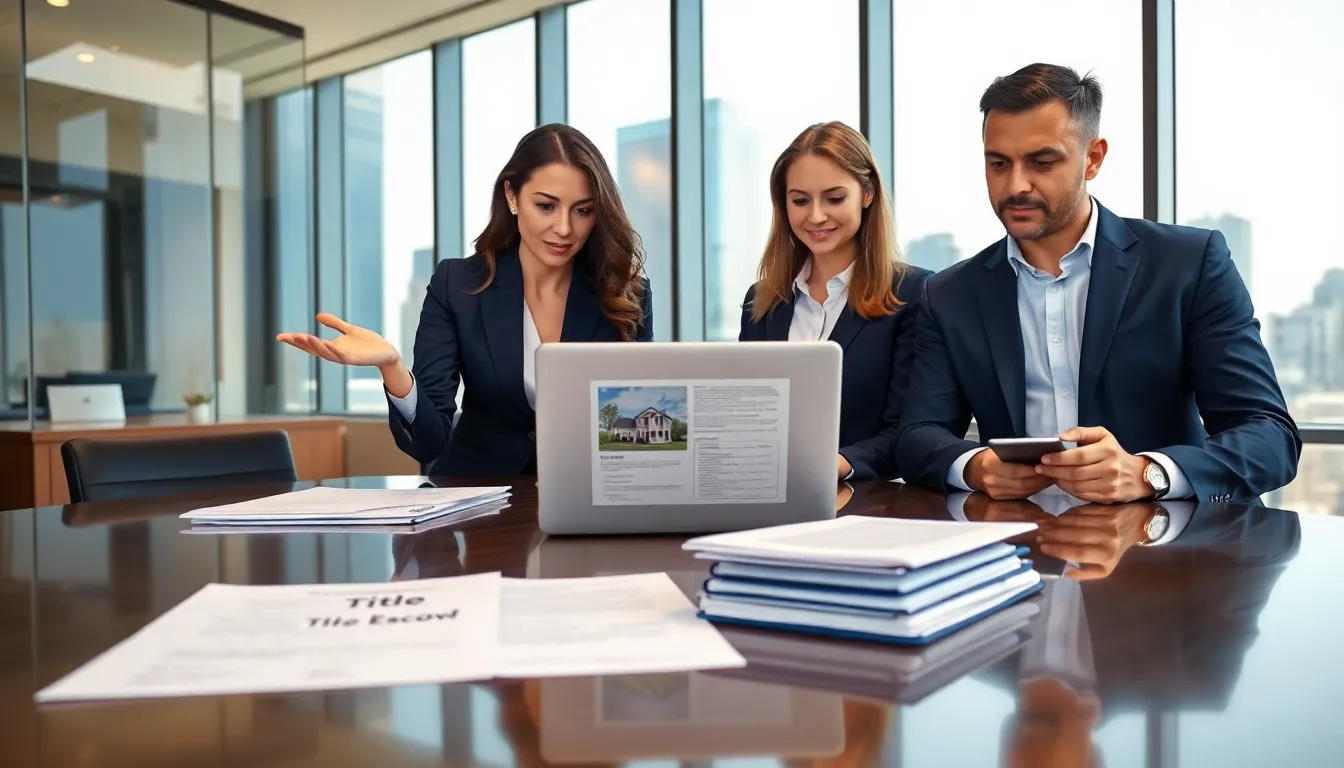When it comes to flooring, it’s easy to overlook its impact on a space. But let’s face it: nobody wants to walk on boring floors that scream “I give up.” Flooring design trends are here to save the day, transforming dull surfaces into stunning statements that can make even the grumpiest of guests do a double-take.
Table of Contents
ToggleOverview of Flooring Design Trends
Current flooring design trends emphasize sustainability, versatility, and aesthetics. Natural materials like hardwood and bamboo gain popularity due to their environmental benefits. Unique textures, such as distressed finishes and hand-scraped styles, attract attention for their character.
Color trends vary widely but lean towards neutral tones combined with bold accents. Grays, beiges, and earthy shades create calm atmospheres, while colors like deep blues or rich greens add striking highlights. Patterns also play a key role, with geometric designs becoming favored choices for modern aesthetics.
Technology influences flooring options as well. Engineered hardwood offers durability while maintaining the look of natural wood. Vinyl planks now mimic stone, ceramic, and wood with remarkable accuracy, providing affordable alternatives. Additionally, smart flooring solutions exist, integrating features like temperature control and humidity detection.
Indoor-outdoor flow remains essential in current designs. Seamless transitions between interiors and exteriors allow spaces to feel larger and more cohesive. Flooring materials should withstand varying weather conditions while maintaining aesthetic appeal.
The movement towards minimalism continues influencing flooring choices. Simple, clean lines create elegant spaces without overwhelming design elements. Embracing open floor plans encourages the use of similar materials throughout homes, maintaining visual continuity.
Ultimately, flooring design trends reflect a shift towards enhancing functionality, sustainability, and style, making floors integral to overall interior design. Incorporating these trends can transform spaces into visually appealing environments.
Popular Materials for Flooring

Flooring materials play a crucial role in contemporary interior design trends. Choices reflect sustainability, style, and functionality.
Sustainable Options
Sustainable flooring options enjoy increasing popularity due to their environmental benefits. Bamboo provides fast renewability and durability, making it an excellent choice. Recycled materials like cork offer eco-friendly alternatives, promoting minimal waste. Additionally, reclaimed wood gains favor for its unique history and character. Consumers seek options that reduce their carbon footprint while enhancing aesthetic appeal. Many manufacturers prioritize sustainable practices, ensuring responsible sourcing and long-lasting products.
Luxury Vinyl
Luxury vinyl delivers a stylish and resilient flooring solution for modern homes. This material mimics natural textures and colors, achieving the look of hardwood or stone. With a variety of designs available, homeowners easily find options that suit their decor. Durability stands out, as luxury vinyl resists scratches and water damage, making it suitable for high-traffic areas. Maintenance remains simple, requiring only regular cleaning to retain its appearance. As technology advances, luxury vinyl continues to evolve, providing innovative features that enhance performance and aesthetics.
Color and Pattern Trends
Current flooring designs increasingly emphasize vibrant colors and bold patterns, enhancing visual impact in various spaces.
Bold Colors
Bold colors stand out in contemporary flooring trends. Deep blues, rich greens, and striking reds dominate the palette. These hues add personality, transforming ordinary rooms into dynamic environments. For instance, flooring in a vivid shade can anchor a room’s decor or create focal points. Accented flooring options, such as colorful tiles or planks, allow homeowners to express personal style while complementing existing decor. Moreover, layering colors within flooring patterns fosters depth and interest, elevating the overall ambiance of a space.
Geometric Patterns
Geometric patterns maintain their popularity in flooring design. They introduce visual intrigue through shapes like triangles, hexagons, and chevrons. Such patterns create a modern aesthetic, appealing to those seeking contemporary style. Choosing geometric tiles or engineered flooring allows for unique arrangements that draw attention. Patterns can enhance spatial perception, making areas appear larger or more cohesive. Designers frequently combine different geometric styles for an eclectic look, balancing boldness with sophistication in various settings.
Texture and Finishes
Texture and finishes play a vital role in flooring design, significantly impacting the overall aesthetic and functionality of a space. Current trends focus on balancing these elements to create visually appealing and durable surfaces.
Matte vs. Glossy
Matte finishes offer a subtle elegance, reducing glare and hiding scratches effectively. They work well in high-traffic areas, providing a more forgiving surface that remains fresh over time. Glossy finishes, on the other hand, reflect light, enhancing the brightness of a room. Such surfaces often add a luxurious feel, making them ideal for spaces where dramatic effects are desired. Designers often select matte for understated sophistication and glossy for vibrancy, allowing homeowners to personalize their environments based on their preferred style.
Textured Surfaces
Textured surfaces add depth and interest to flooring options. Various styles, including hand-scraped, wire-brushed, and embossed finishes, have gained traction. They provide tactile diversity while enhancing durability. Such choices contribute to a rustic or industrial aesthetic, appealing to contemporary tastes. Textures also improve grip and reduce the risk of slips, making them practical for families and active households. Frequently, combinations of various textures create visually stimulating environments, enriching room character and ambiance.
Innovations in Flooring Design
Innovations in flooring design emphasize advancements that enhance aesthetics and functionality. Two key areas of focus are smart flooring solutions and eco-friendly technologies.
Smart Flooring Solutions
Smart flooring solutions incorporate technology to enhance home automation. Sensors embedded in flooring can detect movement, optimize heating, and even monitor moisture levels. These features create a more comfortable living environment while promoting energy efficiency. Brands are increasingly investing in these innovations, ensuring that flooring communicates with smart home systems. This interactivity not only improves convenience but also adds a modern touch to interior design. Furthermore, owners can control lighting and heating through smartphones or voice commands, simplifying daily routines.
Eco-Friendly Technologies
Eco-friendly technologies play a significant role in contemporary flooring design. Many manufacturers now prioritize sustainable materials, like bamboo and recycled vinyl, contributing to reduced environmental impact. Innovations in production processes decrease carbon footprints while maintaining durability. For instance, cork flooring made from renewable resources offers excellent insulation and sound absorption. Moreover, some brands use water-based adhesives and low-VOC finishes to ensure healthier indoor air quality. These practices not only attract environmentally conscious consumers but also demonstrate a commitment to sustainability in the industry.
Conclusion
Flooring design trends are reshaping the way spaces are perceived and experienced. By embracing sustainable materials and innovative technologies, homeowners can create environments that are not only stylish but also environmentally friendly. The shift towards vibrant colors and unique textures adds personality to interiors while maintaining a sense of sophistication.
As designers continue to explore the balance between aesthetics and functionality, flooring remains a crucial element in enhancing overall design. With the right choices, floors can transform ordinary spaces into extraordinary ones, making a lasting impression on anyone who enters.





